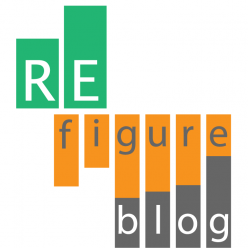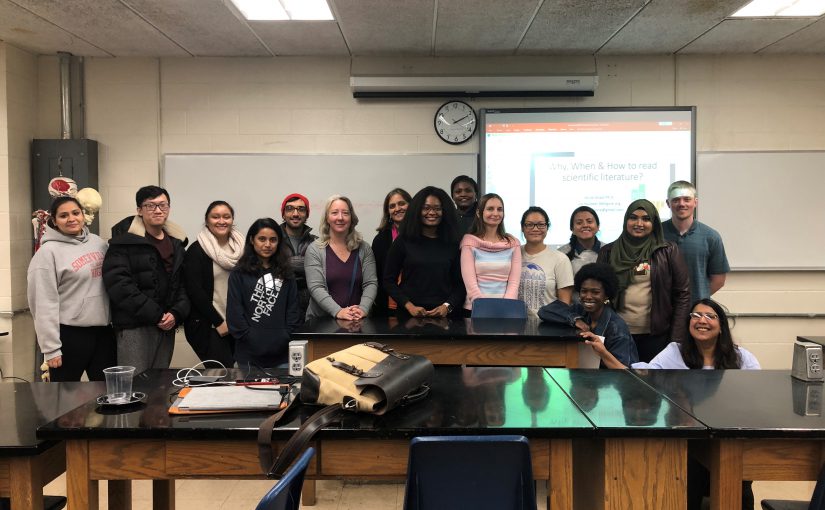So now you’ve learnt how to read papers. ~1 million papers are published annually but even then you may not find what you are looking for when it comes to latest research. What are the latest projects people are working on? Is anyone working to answer a specific problem? Is this information available openly? Do you need to have written a paper to share and get credit for your work? Continue reading Week 6: Preprints and interim research products
Tag: undergraduate
Week 5: Reproducibility of scientific findings, Part 2
This is part 2 of the lesson on scientific reproducibility. Links to other lessons are the end of this post. How can you trust the scientific information you read? Continue reading Week 5: Reproducibility of scientific findings, Part 2
Week 5: Reproducibility of scientific findings, Part 1
Happy New Year! This is the 5th lesson in a 7-lesson course and it is first being posted in 2019. We hope students continue to find it useful any time!
If you have been listenting to current science news, you might have heard the terms reproducibility and replication, particularly in the context of whether we should trust scientific results.
The video in this lesson is a very measured and truthful look at science reproducibility (Thanks TedEd! https://ed.ted.com/lessons/is-there-a-reproducibility-crisis-in-science-matt-anticole,CC BY-NC-ND 4.0). Continue reading Week 5: Reproducibility of scientific findings, Part 1
Week 4: Are you too inexperienced to start building a science identity?
This week in the ReFigure Undergraduate Research Course we recap what we have learnt and ask how you can turn this learning into a science identity on social media . You may have heard of “fake news” on social media. By sharing your learning you can combat fake trends, educate people about science, build a science network and identity and find jobs. Continue reading Week 4: Are you too inexperienced to start building a science identity?
Week 3: Tools and strategies to find papers and save your literature review
Last week, in the ReFigure Undergraduate Research Course (free, online, weekly-see intro) you were introduced to ReFigure. This week you will start saving your literature review. But how to find more papers? Continue reading Week 3: Tools and strategies to find papers and save your literature review
Feedback on the ReFigure Undergraduate Course
The undergraduate course offered by ReFigure taught me a lot. First and foremost, I’ve learned to pay attention to figures in scientific articles and analyze the information reflected in figures and their corresponding legends. One piece of advice I constantly heard from college professors about reading the papers was: “Pay special attention to figures”. However, it was very easy to ignore that advice and slip into a habit of simply reading the article, trying to understand every single word and paying very little attention to figures. Continue reading Feedback on the ReFigure Undergraduate Course
Free Course: find, read, share papers and conduct literature reviews
Welcome to the a free online course designed by ReFigure team for undergrads, masters and PhD students.
Learning objectives Continue reading Free Course: find, read, share papers and conduct literature reviews
Why, Where and How to read scientific literature
October 22-26 was the first statewide STEM week, to accelerate student engagement in science and technology. Bunker Hill Community College participated in STEM week with various presentations and demos to students.
ReFigure’s presentation was an introductory, interactive session to introduce Community College to scientific literature, new tools to make finding, reading scientific literature easy and finally to build an online presence by sharing scientitic news. Continue reading Why, Where and How to read scientific literature
Undergraduate Research: Making the Most of a Short Time.
For many of us, our time as undergraduate researchers served as the starting point for our scientific careers. This short, but critical time period is when students gain their first experience with research outside of the optimized, and time-tested, experiments found in teaching labs and textbooks. Like many others at universities around the country, I have taken an interest in mentoring this next generation of scientists and have run into the unique challenges that these students face. These challenges center on the short time period with which these students have to make progress in the laboratory, both in terms of hours per week and total years in the laboratory. While no amount of technology can replace great mentorship, new tools are being developed to allow students to more rapidly obtain and understand the scientific literature which allows them to make more significant contributions to their chosen fields.
Before one can begin to make intellectual contributions to a particular field one must first understand the current status of knowledge on the topic; what is understood, and what questions remain to be answered. For established and new researchers alike that generally means reading review articles. However, undergraduates often find review articles challenging; having heard the frustrations of many students I have come to realize that their struggles are remarkably consistent and fall into three major categories:
1) The reviews are too broad, leaving the student unsure as to what information is important to understand.
2) The reviews are outdated. Without much experience in critically reading and evaluating the primary literature, undergraduates are unable to transition into the primary literature to pick up where a review leaves off.
3) Finally, with perhaps only a minimal amount of introductory classes, students find reviews written with too many assumptions about the academic background of the reader.
Fortunately, a variety of websites now exist to help address these concerns.
Hypothesis (https://web.hypothes.is/) is a site that allows users to write notes on both webpages and pdfs. Undergraduates, along with their mentors, can use this site to annotate publications. Concepts deemed most important can be highlighted, while particular figures that underlie the lab’s research could be highlighted. Additionally, advanced concepts can be explained in the margin so as to define terms without breaking the flow of the paper.
ReFigure (https://refigure.org/) allows users to capture and comment on figures from the literature. Mentors or senior students could create highly specific “reviews” by combining all relevant figures into a single collection. Through the commenting feature, users can point out important information or define concepts as needed. Since ReFigures can be constantly updated with new publications, this resource is never out of date. As ReFigures link to the source publications, this resource allows undergraduates to seamlessly transition into reading the primary literature as their understanding of the topic progresses.
Many fields have decades worth of primary literature to comb though, a process that is daunting to even the most seasoned scientists, let alone undergraduate researchers. Open Knowledge Maps (https://openknowledgemaps.org/) allows a user to input search terms resulting in a connecting web of concepts with links to publications. Not only is this site great for uncovering key papers in the field, but it also allows for the visualization of how one topic fits into the broader literature base.
These resources are only a few of the many examples of websites and tools that can be used to make the most of the short amount of time that undergraduates have in the laboratory. Once undergraduates get started in their laboratories they are faced with a new obstacle, lack recognition for their hard work. This is an important point for both students and their mentors, which I will address in a second post about how new technology can benefit undergraduate research.








